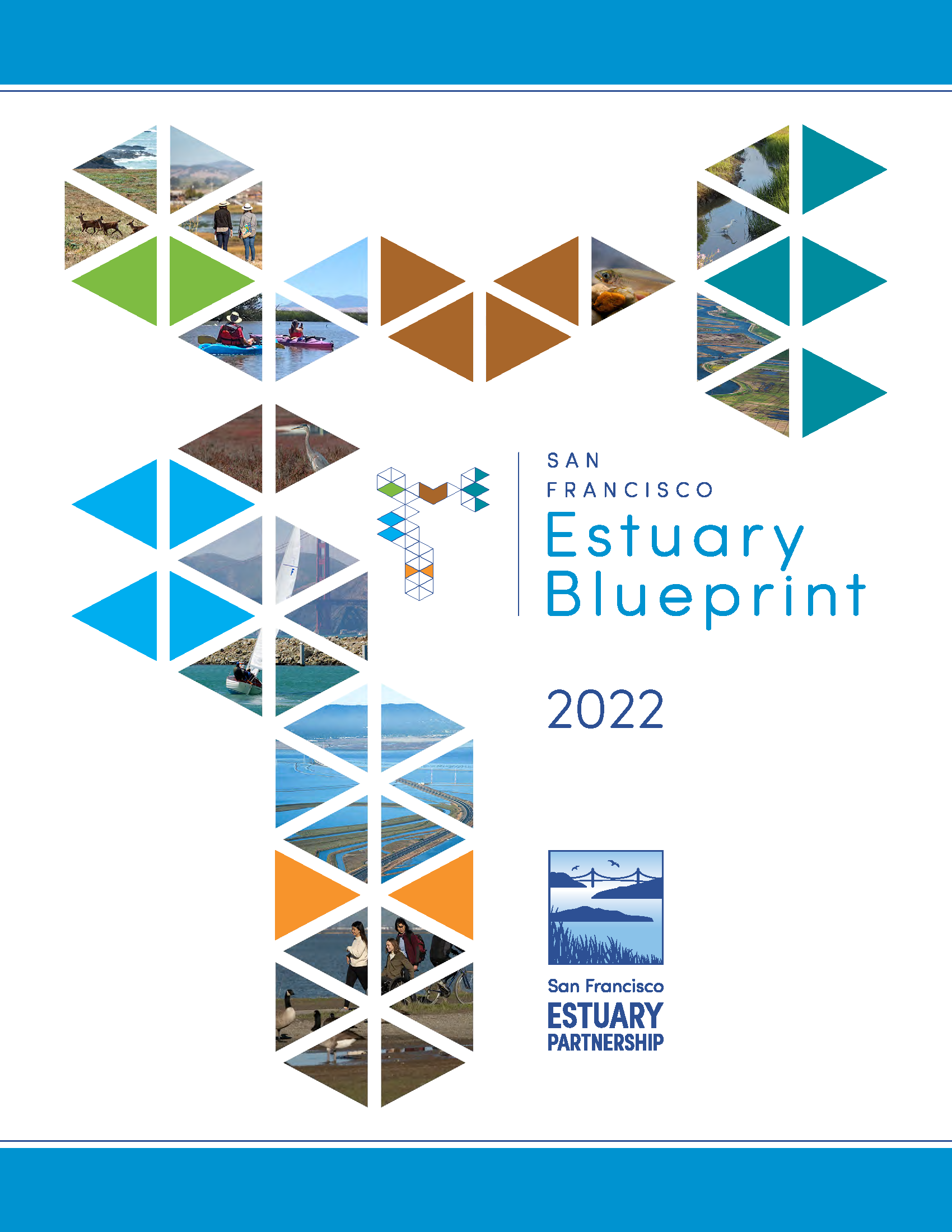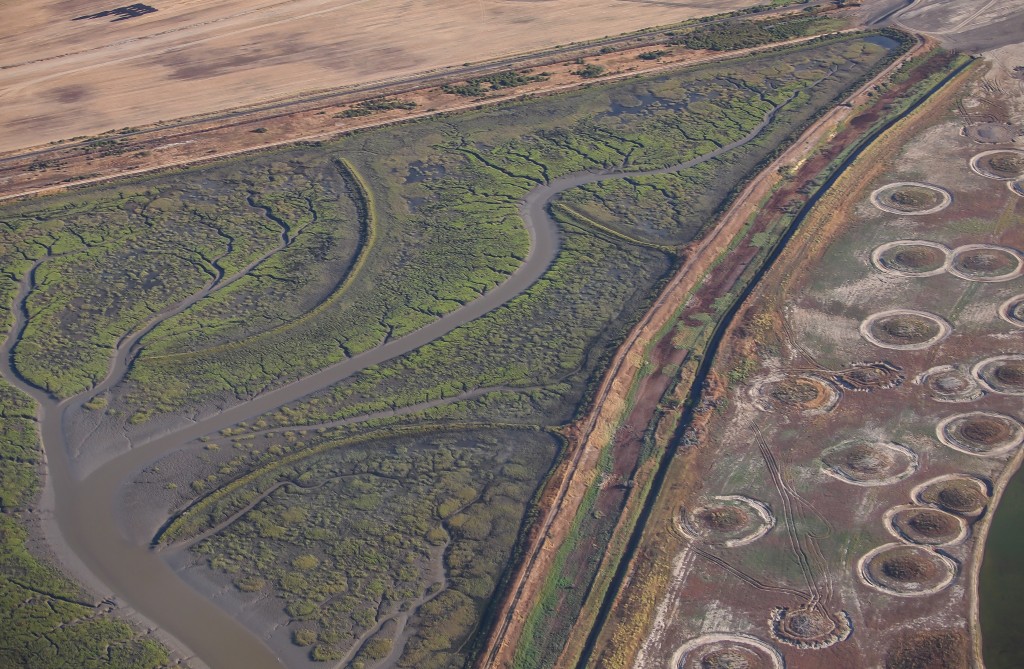Estuary Blueprint
What is the Estuary Blueprint?
The Estuary Blueprint is organized by four main goals: Habitats & Living Resources, Resilience, Water, and Stewardship. Under these goals, the Estuary Blueprint maps out the regional actions and tasks needed to achieve a healthy, resilient San Francisco Estuary.
Originally created in 1993 under the title “Comprehensive Conservation and Management Plan”, also referred to commonly as the “CCMP”, the document has undergone several updates.
Download the ADA-compliant PDF for easy web viewing, or download its print format for beautiful hardcopies.
Download the one-page summary for a high level overview of the Blueprint.

Covering New Terrain!
The San Francisco Estuary Partnership’s Estuary Blueprint is a collaborative agreement about what should be done to protect and restore the Estuary—a road map for restoring the Estuary’s chemical, physical, biological, and social-ecological processes to health.
Allow us to take you on a tour through the document and the landscapes it seeks to restore, enhance, and protect.
About the 2022 Update Process
This update of the Estuary Blueprint, formerly known as the Comprehensive Conservation Management Plan, is less comprehensive in scope than previous revisions, such as the 2016 Estuary Blueprint. The 2022 update process has focused on revisions at the Action and Task levels.
The overall update process was guided by a Steering Committee consisting of volunteers from the Implementation Committee. Estuary Partnership staff established working groups for updating the actions by starting with the 2016 Estuary Blueprint Task Owners and Collaborating Partners. The team also sought to bring in new stakeholders from audiences that haven’t historically been involved in the Estuary Blueprint process.
Those working groups worked for the past year to draft updated Actions in preparation for public input. Early public input was also invited through listening sessions, social media, and an online survey. Over 80 organizations and agencies have been involved in the Estuary Blueprint update process so far, and many more individuals. All written public input has been compiled and addressed in 2022 Estuary Blueprint Public Input Responses.
Additionally, increasing the resilience of the Estuary’s habitats, human communities, and natural resources is a central focus in the 2022 Estuary Blueprint Update. Thus, we have conducted a climate vulnerability assessment in order to understand the extent to which climate change could impact the Partnership’s ability to successfully undertake the actions laid out in the Estuary Blueprint.
For questions on the 2022 Estuary Blueprint Update, please contact Project Coordinator Darcie Luce at darcie.luce@sfestuary.org or (415) 778-6673.
Translations
Spanish and Chinese translations of excerpts of the Estuary Blueprint are now available. For more information about translation services, call (415)778-6757 or email info@bayareametro.gov.

